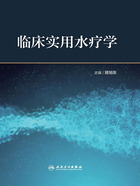
Preface
Being asked to write a foreword for a book is always a pleasure and a pride,especially for this first full Chinese textbook “Clinical and Practical Hydrotherapy”.
Hydrotherapy or aquatic therapy is an intervention modality,using mechanical,thermal and chemical characteristics of water during partial or complete immersion,in combination with the effects of movement.It evokes short-term and long-term adaptational mechanisms of a person with a deranged biological system.The use of environment-related constraints to create psychobiological effects should improve function,activities,participation and quality of life.Aquatic therapy is carried out by staff with appropriate knowledge and competence,ideally in a purpose-built pool.This broad definition comes from the aquatic subgroup of the World Confederation of Physical Therapy(WCPT).Aquatic therapy will encompass the entire area from passive immersion to high intensity aquatic movements,all focused on achieving health benefits by using water.
Aquatic therapy is rapidly growing in China,underlined by the many chapters and authors in this book.Contents have been centered around practical chapters,supported by the state-of-science evidence.Prescribed by medical doctors,but put into practice by allied health professionals—mostly physiotherapists—aquatic therapy generally follows the domains that are important in competence profiles of such health professionals and should be the result of a thorough clinical reasoning process in which basis sciences,patient related research,preference of patients and mastery of therapists are key elements.
The increased popularity of aquatic therapy in acute care,rehabilitation,chronic conditions and lifestyle disorders is a worldwide phenomenon,which is reflected in the comprehensive lists of references in this book.Although the history of modern active aquatic therapy already spans some 6 decades,still the development continues as a faster rate than ever.(Neuro)imaging techniques are developing and already are used extensively in aquatic immersion studies,as well as laboratory measurements on e.g.hormones,growth factors,neurotransmitters and cytokines:leading to exciting results that back-up aquatic therapy.
But popularity isn't enough.Aquatic clinical practice must be justified through the evidence elements listed earlier.Research,education,implementation and infrastructure are the cornerstones of succes.Although practice has traditionally been founded on clinical expertise of a master,aquatic therapy research has increased enormously and in general supports the health effects of aquatic therapy in various patient groups.The profession has to be critical however.Because of it's popularity many claims of potential health benefits are made but without proper evidence base.This book supports the evidence base and will surely be an important resource in near future and can only be recommended to all colleagues in the aquatic field.
This book doesn't only fit in in aquatic developments in China,but also in the mission of the Swiss Association IATF,which is committed to aquatic therapy:initiates and develops this worldwide by it's comprehensive educational program.

Vice-chair Association IATF,Valens,Switzerland